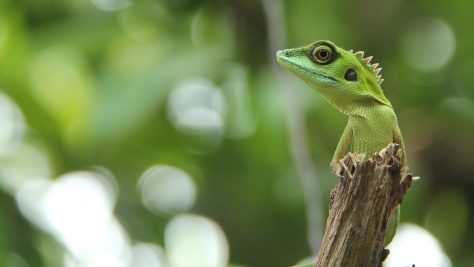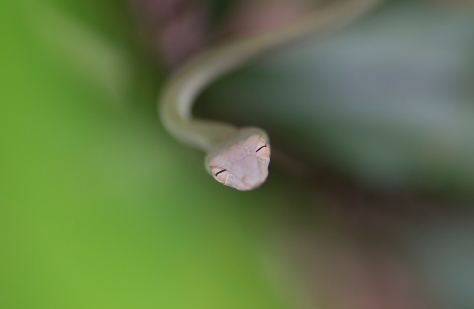
Hohoho! What a joyful Christmas! While we give back to our loved ones, don’t forget to also be kind and loving to our wildlife. 🙂 As promised, here is a discussion about ethical wildlife photography.
Recently, there were reports of questionable behavior of nature photographers which received heavy backlash from nature lovers and other photographers alike. Here at BES Drongos, our photographers love to shoot but we love and respect the nature and wildlife as well, and here are some tips we use to uphold the secret (okay just kidding) commandments of wildlife photography.
Safety first
The most important is one that is often flouted, and it encompasses safety for yourself, for others and for wildlife.
- Stay on the trail. You might encounter venomous animals and other dangers (such as from rattan spines) if you veer off trails and boardwalks
- Ensure your position and gear do not obstruct other people to prevent falls and injuries
- Keep a safe and respectful distance with the subject to prevent attacks and so as to not startle it
Going too close might also let the subject become accustomed to human presence, and this is something not just photographers have to take note. For example our long-tailed macaques (Macaca fascicularis) in MacRitchie have now associated humans with food and this has worsened the human-wildlife conflict with nearby residences.

Keep it real
Naturally, photographing endangered or rare species is exciting and none of us want to screw up such opportunities. But where do we draw the line as to how far we can go to get a great keeper? How do we retain the authenticity of a wildlife/nature shot?
- Don’t bait, just wait.
Recently, there was heavy scrutiny over actions of some photographers who stuffed polystyrene foam in live fishes and injected air into their swim bladders to keep it afloat and attract a grey-headed fish eagle (Ichthyophaga ichthyaetus) which is critically endangered in Singapore. You can read all about it here. Not only is this practice harmful to the eagle as it ingests bits of foam, this is also cruel to the fishes.
If you really want the food in mouth shot, just wait for it.
Baiting might condition the animal to think that humans can provide them food, which alters their behavior and ability to look for their own food in the long-term. Next, the animal might associate the baiting site to be bountiful in food. Also, baiting when done too regularly can cause it to become too accustomed to humans which increases poaching risks. If the bait food is unable to provide the required nutrients, it can also cause imbalances in the animal’s diet.

- Say no to Studio.
Some photographers alter the surroundings of the subject to get a better or cleaner look by clearing the vegetation, snapping off twigs and branches that might obstruct their view. Not only is it damaging to the habitat, it also exposes the subject to predators and poachers as well. Clearing the vegetation around a nest or roost can mean snakes or birds of prey can easily find the subject, the eggs of birds, or the young. When it comes to endangered animals, such practices can undermine conservation efforts and worsen population decline. These “studios” are also often strewn with litter from photographers.
- Hands off.
A photographer made a bad reputation for himself when he was caught tying a chick of a tern to a bush. He was fined $500 for the act of cruelty. I think this one speaks for itself – remember to care about the well-being of wildlife, not just about your photographs.
- No playback audio.
Scientists and field researchers sometimes use playback audio to observe the behavior of an animal in response to a call of a mate, prey or predator. Some bird photographers use playback audio to attract birds forward but a study on the effects of playback audio was carried out in 2013 and have found this: “playback audio could negatively affect species if they become stressed, expend energy, or take time away from other activities to respond to playback audio.” Other activities may include feeding, grooming, mating or even caring for their young.
Be aware of other photographers
It is important to know that most nature photographers love what they do and they find it enjoyable, which is why it is also paramount that we do not make their photography experience a bad one.
- Keep it down and do not make a lot of noise so as to startle the subject.
- Do not go too close to the subject and scare it away, therefore not allowing others to get an equal opportunity at getting a shot. It should also be said that we should all let other photographers have a chance and take the spot once you are finished with your shoot
- Using baiting, playback or other unethical means mentioned above can ruin the experiences of other photographers

- Do not use flash photography without ensuring the other photographers have had their chance since it may startle the animal and cause it to flee. Your fill flashes might also affect shots of other photographers. When it comes to nocturnal animals which have more light-sensitive eyes, a sudden burst of flash could stun them.
All in all, just shoot with love and care – you can’t go very wrong with that! Merry Christmas and a Happy New Year to all!

Words by Aw Jeanice





 Jacqueline is a year 4 BES environmental biology student currently studying urban bats. She has been taking photos of random things since she was 13, and her favourite lens is a Samyang fisheye for her Olympus OMD. When not guiding, taking photos or nagging other guides, she enjoys drawing comics and squishing her cats. Check out her new Facebook page –
Jacqueline is a year 4 BES environmental biology student currently studying urban bats. She has been taking photos of random things since she was 13, and her favourite lens is a Samyang fisheye for her Olympus OMD. When not guiding, taking photos or nagging other guides, she enjoys drawing comics and squishing her cats. Check out her new Facebook page – 

